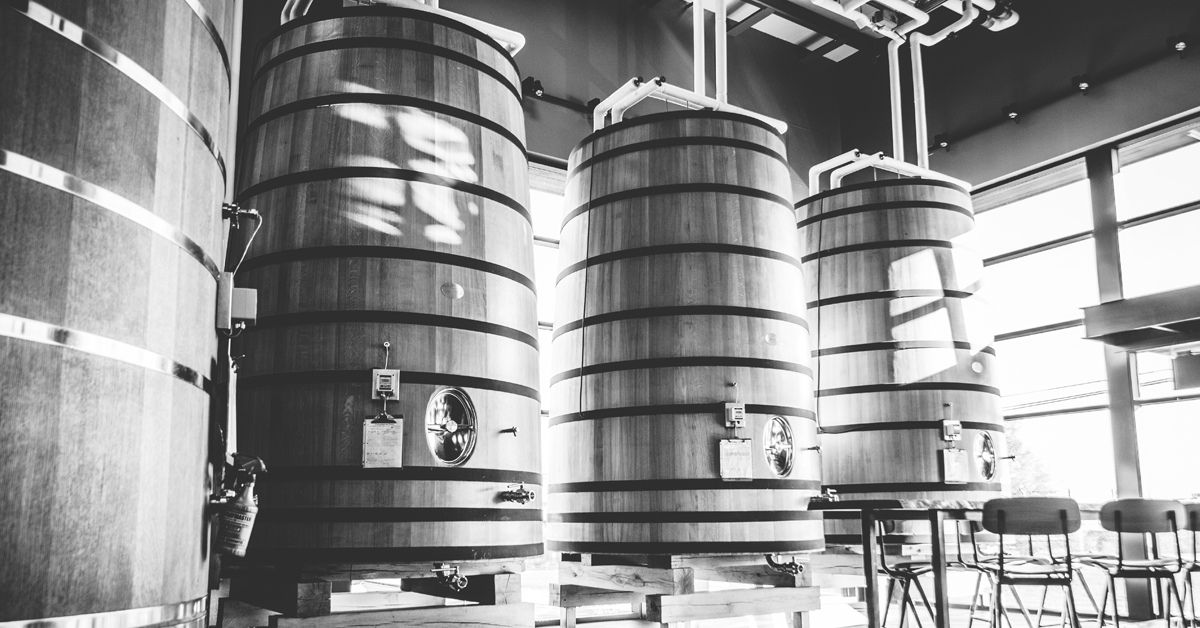Sour beers are a re-emerging trend in the beer world, thanks largely to the Americans for reinvigorating this unique style of brewing. Many breweries shy away from brewing sour beers on a commercial scale, due to their potential for failure and loss of profits. But as homebrewers we are able to experiment and try these exciting styles without fear.
Below is a brief description on some of the techniques used for making sour beers and a detailed process for kette souring with the Grainfather and our Pressure Transfer attachment for your fermenter;
- Many are produced by adding mixed cultures of Saccharomyces, Brettanomyces, pediococcus and lactobacillus (lacto) into the fermenter to product the tart character and to produce the alcohol. However lacto is very sensitive to the antibiotic effect of the hops, therefore Berliners produced in this way have to be very low in IBU. This technique can also mean that the beer is tied up in the fermenter for several months until the pH and flavour have got to a point where the brewer is happy. This technique can also provide a source of contamination issues since the lacto is used in the final stage of brewing stringent cleaning and sensitisation practices must be implied before the equipment is used for non-sour beers or have dedicated equipment for these beers. If possible sterile filter before kegging (0.2 micron) and serving will lock in the flavour in its current stage and also save a lot of trouble with contaminated serving equipment. However, don’t be discouraged by this technique as this technique can produce the most complex of souring flavours.
- Using lactic acid, this is definitely the easiest technique for souring beers, but this does generally result in the most one-dimensional sour flavour. Adding lactic acid is best done in the fermenter while aerating the wort by adding small amounts and monitoring the pH.
- Kettle Souring is by far the most popular method for souring, this method involves stopping the brewing process after sparging the grains, adding a source of lacto bacteria and allowing this to grow and drop the pH before continuing with the brewing process. This process yields complex relatively consistent flavours with a very small risk of contamination.
- Sour Mashing is very similar to kettle sour where a percentage or all of the grist is mashed and allowed to sour using a source of lacto a few days before the rest of the grist is mashed and the brew completed this technique also has a low risk of contamination but is also a lot more complex and harder to control.
Kettle Souring Berliner Weisse with the Grainfather and the Pressure Transfer
Berliner Weisse beers are some of our favourite summer brews here at Grainfather, due to the low alcohol, refreshing tartness and great flavours. These beers can be produced in several different ways, but kettle souring is the easiest safest in terms of risk of contamination and produces the most consistent flavour
To kettle sour with the Grainfather and Pressure Transfer you will need:
- Conical fermenter lid
- CO2 bottle and fitting needed for pressure transferring
- Source of lacto, like a culture or handful of base grains
- Sanitiser and a vessel suitable for blowoff assembly
- Counterflow chiller
Complete your mash and mash out using the normal method. With sparging, if you have the Grainfather Connect Controller, turn off the heating while sparging or do this process in manual mode. Finish the sparge, connect the counterflow chiller and without the water on recirculate for 7 mins to sanitise the chiller. Use the chiller to cool the wort to about 400C (1040F) by recirculating back into the grainfather. Use a food lactic acid to adjust your wort pH to 4.5 you will find that pH will likely be between 5.0 – 5.3. Remember to take your sample for pH and cool to 200C (680F) before taking your reading unless your pH meter has a temperature probe and calibrated at temperature.
Set your Grainfather to hold the temperature at 400C (1040F). Now it is time to pitch your lacto this can be done with a culture or done by adding a handful of grains base grains in a fine mish hop sock (this will make it easier to remove later) attach the conical fermenter lid, when attaching the pressure transfer assemble the pipe upside down so that the kink in the pipe is not inside the grainfather. This will allow the pipe to be raised higher in case the volume of wort is quite high. Attach a silicon tube to the top into a vessel of sanitiser. With the pressure transfer pipe out of the wort connect the pressure transfer to your CO2 and purge the top of the grainfather with CO2 set your pressure transfer to between 0.3-1.0 psi. Check the pH of your wort daily by lowering the pressure transfer pipe into the wort and collecting a sample from the blow off tube, making sure you keep everything as sanitary as possible. For a Berliner Weisse, you are looking for a pH of between 3.3 and 3.8.
Once this pH or taste has been reached, remove the fermenter lid and pressure transfer and boil the wort adding your hops. After the boil, attach your counterflow wort chiller as usual and chill directly into your fermenter, pitching your desired strain. For a Berliner Weisse, consider using a clean and neutral yeast and if your pH is lower than 3.5 you should consider upping your pitching rate.
